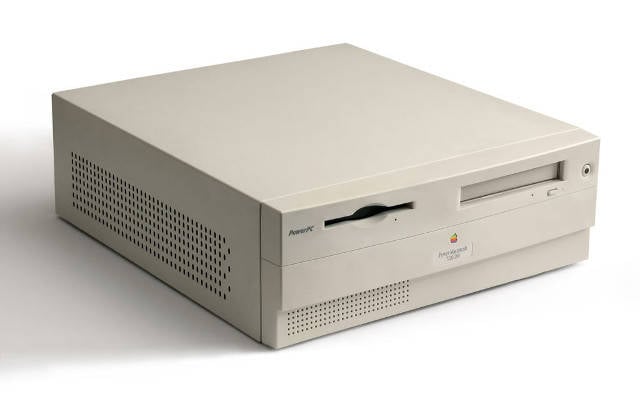This article is more than 1 year old
Apple Fools: Times the House of Jobs went horribly awry
Plenty of bumps in the 40-year road for Mac makers
PC parts in a Mac
No, we're not talking about the DOS-boot cards in the early Power Mac and Performa models (though that probably wasn't the best idea either). We're referring to the design abomination that was the Power Mac 4400.
If you had to pick a metaphor for what was wrong with Apple in those days, you could not do worse than this half-hearted attempt to match the horde of PC vendors who were shifting Windows machines hand-over-fist in those days.
Apple did this by trying to shove a Mac into a PC-like enclosure and other bare-bones hardware options, along with a specially-modified motherboard that had a non-upgradeable CPU (remember when people used to upgrade the CPU on their Macs? How quaint).

Even the floppy drive was on the wrong side
The result was a machine that managed to combine everything people disliked about both the Mac and PC machines of that era. Not surprisingly, Apple found itself on the brink of financial ruin about that time.
The ill-fated Performa/PowerMac arrangement that nearly drove Apple to financial ruin was also aided by the decision to allow...
Mac Clones
You can see why Apple thought this would work. Microsoft was making a fortune by licensing its OS, and the flood of vendors to the market helped expand the Windows ecosystem and make everyone tons of money. Why couldn't this work for Apple?
The Mac clone program allowed a handful of partners, including Motorola, Power Computing and Radius to build their own boxes, then pay Apple a royalty to use its ROM and the MacOS. The clones were, by and large, decent machines and some were arguably better than Apple's own offerings at the time.
They were also, however, a terrible business decision for Apple. They didn't do much to expand the market share of the MacOS, so rather than help to capture ground from Windows, the clones only served to take more hardware sales away from Apple and force it to compete within its own market.
The clones were among many projects to get the axe when Steve Jobs regained control of the company, but first Jobs had to swallow his pride by...
Putting Bill Gates on the big screen
In hindsight, this was the deal that helped to save Apple and bring about its rebirth, but at the time, the sight of Gates lording over Steve Jobs and a room full of Macworld attendees was taken as a clear sign that the Mac vs PC war was over, and Microsoft had won.
Steve Jobs was keenly aware of this too, as upon hearing the horrified/enraged reaction from the crowd, he uncharacteristically lost his cool on stage and laid into the audience about showing "respect" for the company Apple had been at war with for more than a decade.
Apple and Jobs would soon turn things around and once again be in position to tweak Microsoft every chance they got. But even in the midst of that stunning turnaround, there were mistakes like the...
